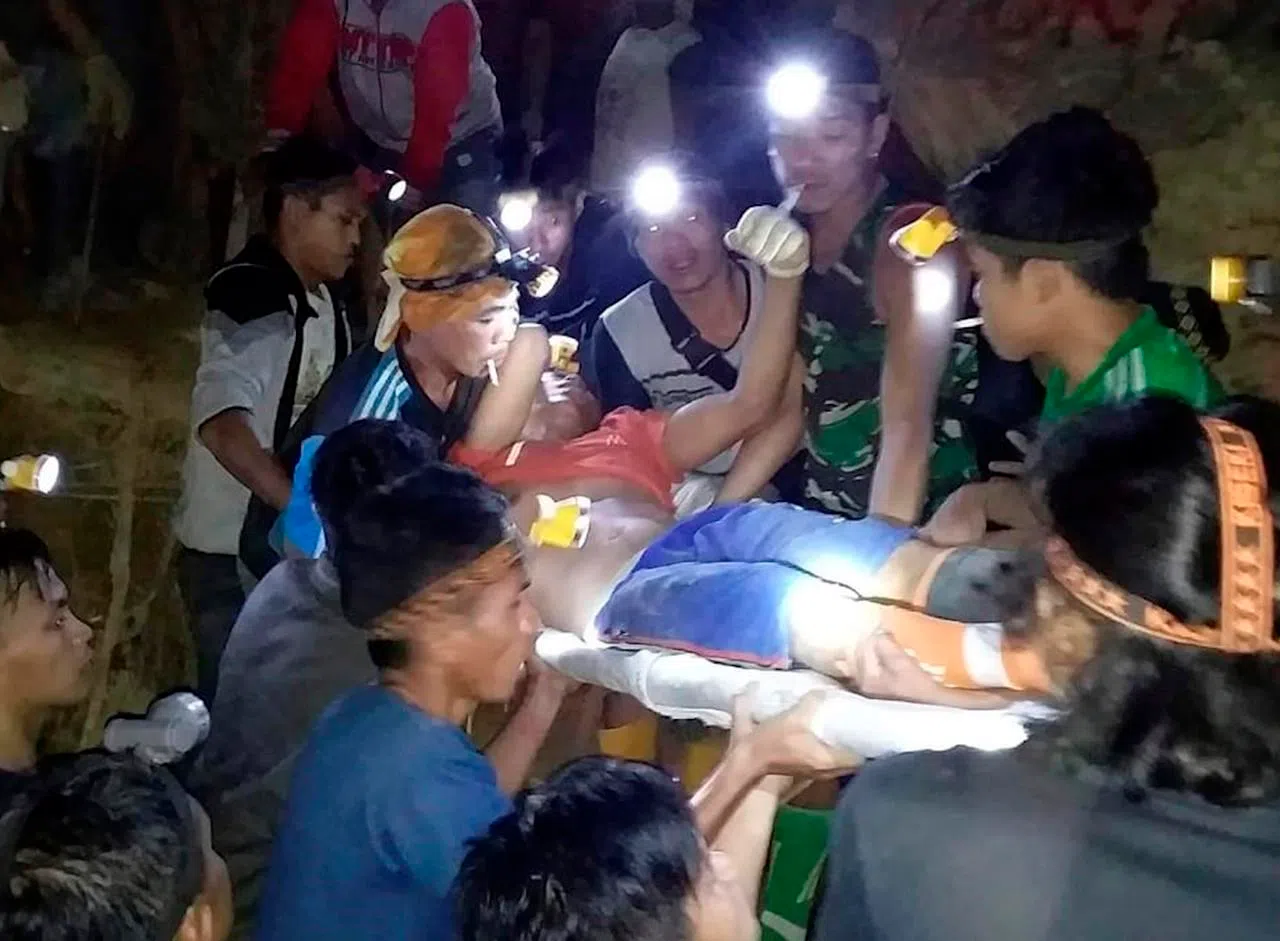
Workers dig by hand to free dozens in Indonesia mine rubble
BOLAANG MONGONDOW, Indonesia — A grueling search and rescue effort has saved 19 people from the debris of a collapsed illegal gold mine in Indonesia’s North Sulawesi province but officials said Wednesday that several dozen remain trapped.
The national disaster agency said four people are confirmed dead and an estimated 37 are still buried beneath soil and rocks in an area that is difficult to access because of its remoteness and steep terrain.
“The land contour is worrying with an 80 degree slope, so it’s pretty steep, and we don’t want any unwanted things to happen,” said local police chief Gani Fernando Siahaan. “We will continue the rescue process until night as long as weather permits.”
Emergency personnel used their bare hands and farm tools to search for the victims. Video showed rescuers struggling to bring out a body bag in nearly vertical terrain.
